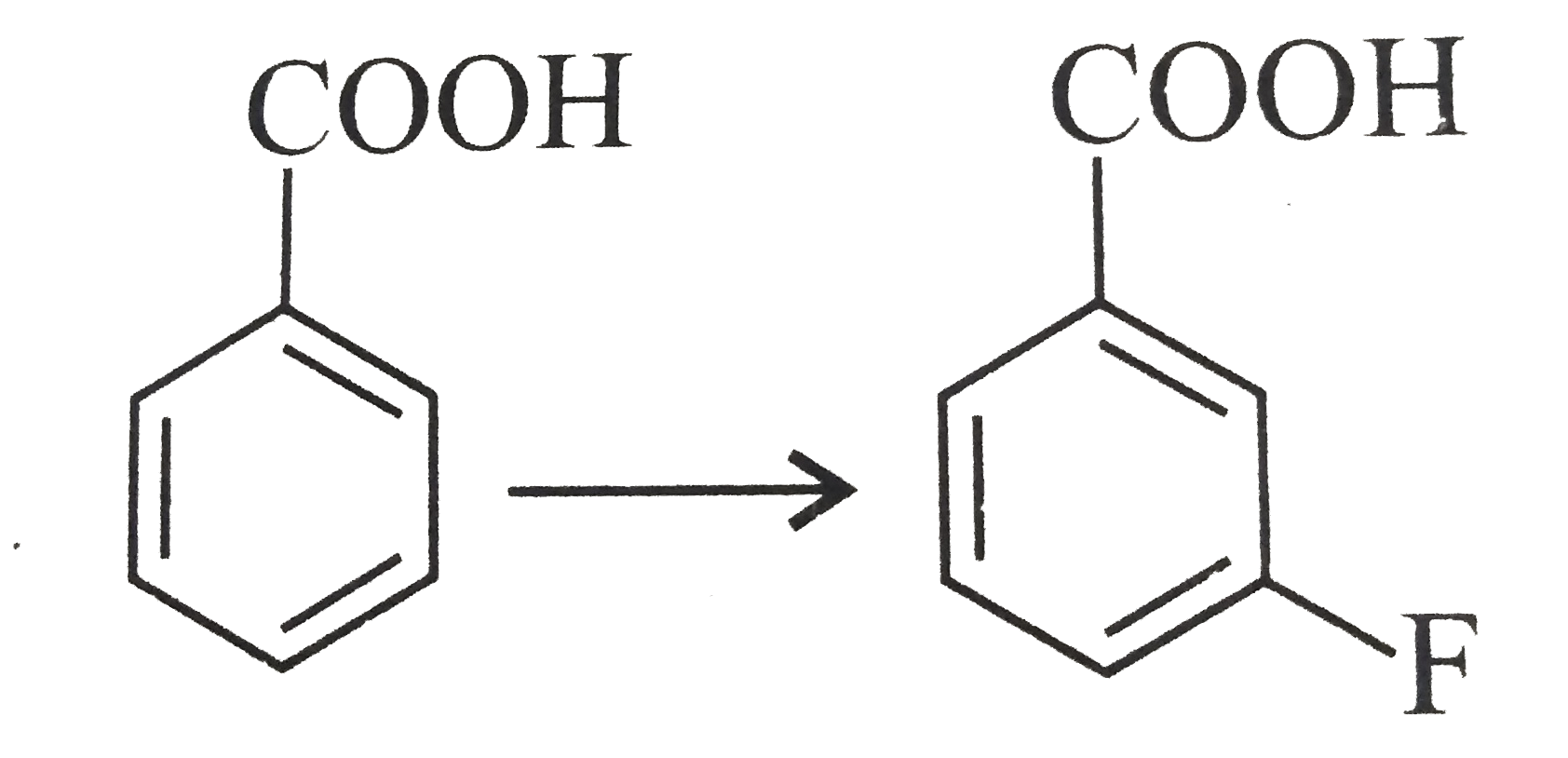Convert nitrobenzene to sulphanilic acid
in not more than four steps.
To convert nitrobenzene to sulphanilic acid in not more than four steps, we can follow these steps:
Step 1: Reduction of Nitrobenzene to Aniline
- Reactants: Nitrobenzene (C6H5NO2), Tin (Sn), Hydrochloric Acid (HCl)
- Reaction: Nitrobenzene is reduced to aniline (C6H5NH2) using tin and hydrochloric acid.
C6H5NO2+3Sn+6HCl→C6H5NH2+3SnCl2+2H2O
Step 2: Formation of Aniline Hydrogen Sulfate
- Reactants: Aniline (C6H5NH2), Sulfuric Acid (H2SO4)
- Reaction: Aniline reacts with sulfuric acid to form aniline hydrogen sulfate (C6H5NH3HSO4).
C6H5NH2+H2SO4→C6H5NH+3HSO−4
Step 3: Sulfonation of Aniline
- Reactants: Aniline hydrogen sulfate (C6H5NH3HSO4), Heat
- Reaction: The aniline hydrogen sulfate undergoes sulfonation to form sulfanilic acid (C6H4(NH2)(SO3H)).
C6H5NH+3HSO−4Δ−→C6H4(NH2)(SO3H)+H2O
Step 4: Formation of Sulfanilic Acid
- Final Product: The product from the previous step is sulfanilic acid (C6H4(NH2)(SO3H)).
C6H4(NH2)(SO3H) is sulfanilic acid.
Summary of Steps:
1. Nitrobenzene is reduced to aniline using Sn and HCl.
2. Aniline reacts with H2SO4 to form aniline hydrogen sulfate.
3. Aniline hydrogen sulfate undergoes sulfonation to produce sulfanilic acid.
4. The final product is sulfanilic acid.
---
- Reactants: Nitrobenzene (C6H5NO2), Tin (Sn), Hydrochloric Acid (HCl)
- Reaction: Nitrobenzene is reduced to aniline (C6H5NH2) using tin and hydrochloric acid.
C6H5NO2+3Sn+6HCl→C6H5NH2+3SnCl2+2H2O
- Reactants: Aniline (C6H5NH2), Sulfuric Acid (H2SO4)
- Reaction: Aniline reacts with sulfuric acid to form aniline hydrogen sulfate (C6H5NH3HSO4).
C6H5NH2+H2SO4→C6H5NH+3HSO−4
- Reactants: Aniline hydrogen sulfate (C6H5NH3HSO4), Heat
- Reaction: The aniline hydrogen sulfate undergoes sulfonation to form sulfanilic acid (C6H4(NH2)(SO3H)).
C6H5NH+3HSO−4Δ−→C6H4(NH2)(SO3H)+H2O
- Final Product: The product from the previous step is sulfanilic acid (C6H4(NH2)(SO3H)).
C6H4(NH2)(SO3H) is sulfanilic acid.
1. Nitrobenzene is reduced to aniline using Sn and HCl.
2. Aniline reacts with H2SO4 to form aniline hydrogen sulfate.
3. Aniline hydrogen sulfate undergoes sulfonation to produce sulfanilic acid.
4. The final product is sulfanilic acid.
Topper's Solved these Questions
- ALKENE, ALKANE & ALKYNE BOOK - ALLENCHAPTER - ALKENE, ALKANE & ALKYNE EXERCISE - EXCERSISE-1
25 Videos
- ALKENE, ALKANE & ALKYNE BOOK - ALLENCHAPTER - ALKENE, ALKANE & ALKYNE EXERCISE - EXCERSISE-2
20 Videos
- ALKENE, ALKANE & ALKYNE BOOK - ALLENCHAPTER - ALKENE, ALKANE & ALKYNE EXERCISE - EXERCISE-5[A]
68 Videos
- AIIMS 2019BOOK - ALLENCHAPTER - AIIMS 2019EXERCISE - CHEMISTRY
40 Videos
- ALKYL AND ARYL HALIDEBOOK - ALLENCHAPTER - ALKYL AND ARYL HALIDEEXERCISE - EXERCISE-05 (B)
35 Videos
Similar Questions
Sulphanilic acid is a/an:
View SolutionConversion of
 ( in not more than four steps )
( in not more than four steps )
View SolutionConversion of Bromobenzene to p-methoxyphenol (in not more than five steps)
View SolutionConvert the following (in not more than three steps):
 .
.
View SolutionConversion of Benzoic acid to m-Fluorobenzoic acid (in not more than 3 steps)
View SolutionConversion of Nitrobenzene or Aniline into sulfanilic acid
View SolutionHow will you prepare benzoic acid from ethyl benzene in not more than two steps?
View SolutionFormic acid is more acidic than
View SolutionShow with equations how the following compounds are repared (equations need not be balanced):
(i) 4-nitroaniline to 1,2,3-tribromobenzene.
(ii) Aniline → Benzylamine (in 3 steps)
Convert_E01_951 _Q01.png) in not more than four steps.
in not more than four steps.
View SolutionConversion of Propionic acid to Butylamine ( four steps )
View Solution